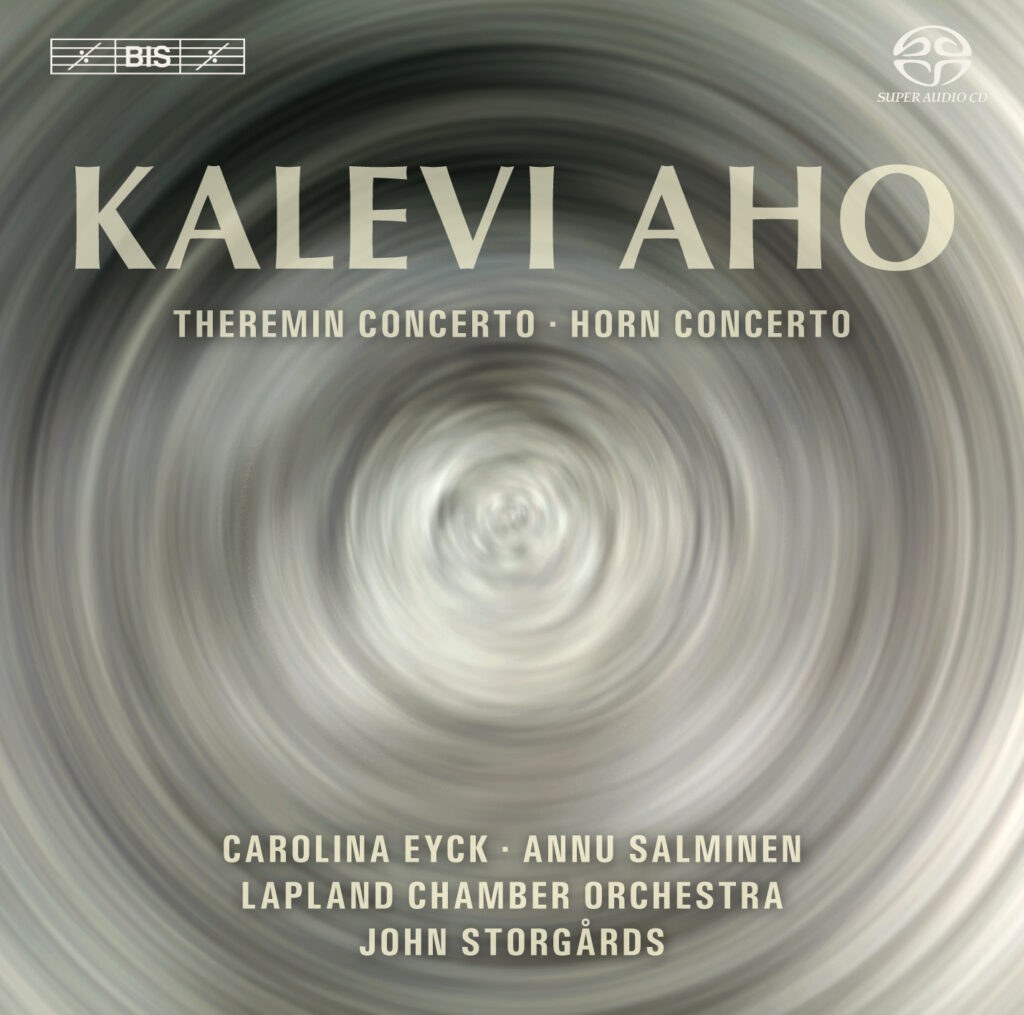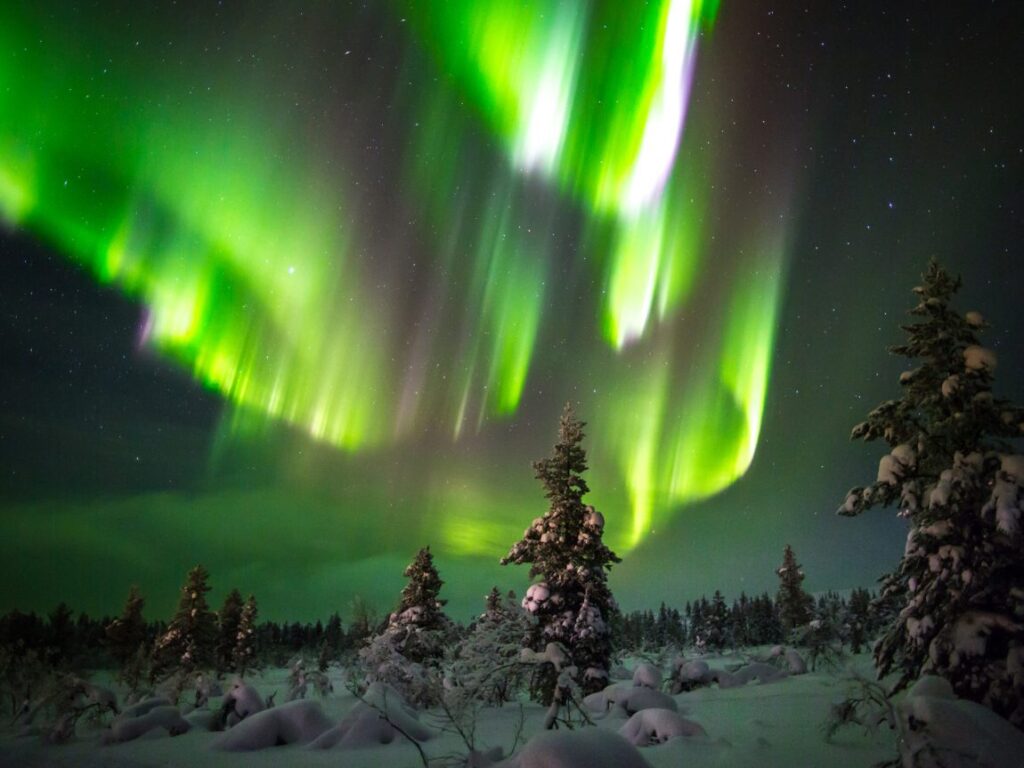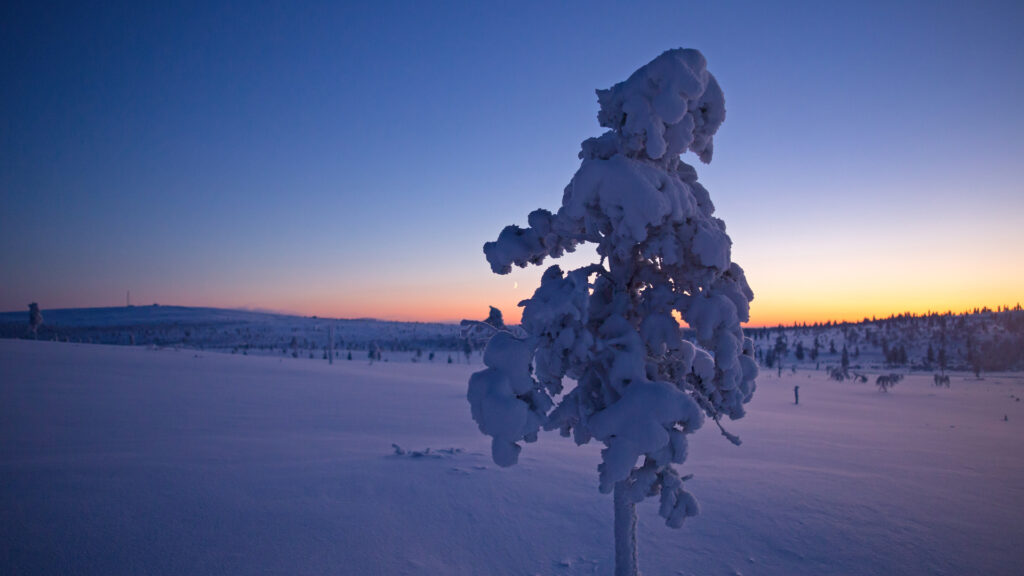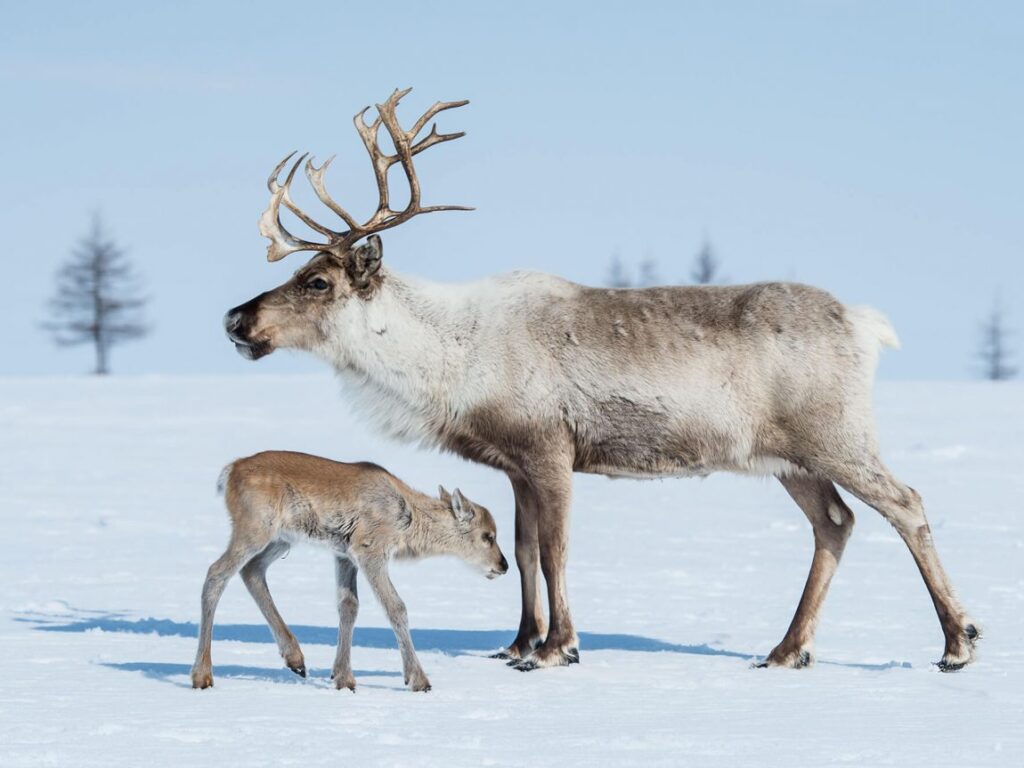
The album cover of Eight Seasons (from Eyck and Grabic of carolinaeyck.com, 2022).
- Eight Seasons (2011) is a 34-minute Theremin Concerto composed by Kalevi Aho for the Lapland Chamber Orchestra from Lapland—the northern area of Finland. Theremin is an electronic musical instrument, and this concerto first premiered in 2012, featuring a theremin soloist, a wind quintet, percussion, and strings. The concerto was recorded by BIS Records in July 2014, and it won “Concert Recording of the Year” at ECHO Klassik 2015. The concerto is divided into eight movements, inspired by Lappish seasons. These eight seasons are distinct weather periods observed by the Sámi people who are the original inhabitants of Lapland. Kalevi Aho is one of Finland’s modern leading composers. Aho was born in Forssa in southern Finland in 1949. He began studying violin at the age of 10 and studied music and the performing arts at multiple universities. After gaining experience as a lecturer and professor in the musical arts, he became a freelance composer by 1993. Aho has composed a variety of concertos, operas, symphonies, and other orchestral works.
- You can listen to Eight Seasons here in full, and the separated movements here.
How is this related to climate?
- Each movement of “Eight Seasons” corresponds to one of the eight seasons of the year classified by the Sámi calendar:
- August: “Harvest” represents Čakčageassi (Autumn Summer), which is the perfect time for people to harvest berries and mushrooms, and for reindeer to build their fat reserves. The low pedal points or sustained notes of the strings are a common music symbol for nature, and here they are used to simulate a crop-filled land.
- September to October: “Autumn Colors” illustrate Čakča (Autumn). The woodwinds’ transition into this movement represents the falling autumn leaves by their quick and fleeting notes. September is also when the northern lights can be seen again in Lapland (image below).

Photo of the Northern Lights or Aurora Borealis in Finland (from Discover the World, 2021).
-
- November to December: “Black Snow” captures the feeling of Čakčadálvi (Autumn Winter). The movement begins with a lonely tune of the oboe, illustrating the lonesome winter. This also is the reindeer-hunting season for the Sámi people.
- December to March: “Christmas Darkness” simulates Dálvi (Winter). This is the darkest and longest time of year, with a 24-hour ‘polar night’ that carries a deep blue glow across the sky (image below). To reflect this, the movement is very quiet with only low, looming notes by the theremin. The music carries the feeling of an empty and dark winter night.

An image of the Polar Night from Lapland (from Lapland Above Ordinary, 2017).
-
- March to April: “Winter Frost” depicts Giđđadálvi (Spring Winter). The instrumental’s chaos and high key simulate winter storms and fierce cold, while the theremin solo represents the common struggle to survive in nature.
- April to May: “Crusted Snow” paints a picture of Giđđa (Spring). The peaceful instrumental at the beginning of this movement illustrates nature’s return. During this season, reindeer calves are taking their first steps (image below).

Lappish reindeer during the Giđđa or Spring season (from DIscover the World, 2021).
-
- June: “Melting of the Ice” portrays Giđđageassi (Spring Summer). The deep thumping and rumbling of the instrumental at the beginning of the movement create a mental image of ice cracking.
- June to July: “Midnight Sun” represents Geassi (Summer). This season is full of endless daylight because the sun never sets. This image is transferred to the music by the theremin’s continuous singing-like tune that never stops.
- Aho’s arrangement shows appreciation for the eight distinct seasons in Finnish Lapland. This northernmost region of Finland has a subarctic climate. The arctic area experiences climate change at three times the rate of the world, which poses a greater threat to the natural lifestyle of its animals and people. For example, the increasing warmth of the winters have resulted in more rain. However, this rain quickly freezes at the surface and prevents reindeer from feeding on lichen under the snow. As a result, reindeer have been at risk of starving and giving birth to lighter young. Lappish herders express concern that their traditional lifestyle may disappear soon because of these risks to reindeer.
References and additional resources
- Eyck, C. and Grabic, D. “Eight Seasons – Concerto For Theremin and Chamber Orchestra (2011).” Carolina Eyck. 2022. https://www.carolinaeyck.com/kalevi-aho.
- Gehrman, F. “Aho, Kalevi.” Fennica Gehrman. 2023. https://fennicagehrman.fi/composer/aho-kalevi/.
- Gray, W. “The 8 Seasons of the Sami.” Discover the World. 2021. discover-the-world.com/blog/the-8-seasons-of-the-sami.
- “Our Eight Seasons.” Kiruna in Swedish Lapland. 2021. https://kirunalapland.se/en/our-eight-seasons/.
- Torvinen, J. “Atmosphere and Northern music.” Music as Atmosphere: Collective Feelings and Affective Sounds (1st ed.). eBook, Routledge, 2019. pp. 102-107. https://doi.org/10.4324/9780815358718.
- “The Magical Colors of Polar Night” Lapland Above Ordinary. 2017. lapland.fi/visit/only-in-lapland/polar-night-colors-magical-time/.
- Katanich, D. “Climate change in Lapland: Reindeer herders struggle as global warming threatens their future.” Euronews. 2021. https://www.euronews.com/green/2021/12/24/climate-change-in-lapland-reindeer-herders-struggle-as-global-warming-threatens-their-futu
- Mapes, T. “Weather in Finland: Climate, Seasons, and Average Monthly Temperature.”Tripsavvy. 2020. https://www.tripsavvy.com/weather-in-finland-4135832
- Salonen, S. “Climate change report warns of multiple threats Finnish Lapland.” Arctic Today. 2021. https://www.arctictoday.com/climate-change-report-warns-of-multiple-threats-finnish-lapland/?wallit_nosession=1
